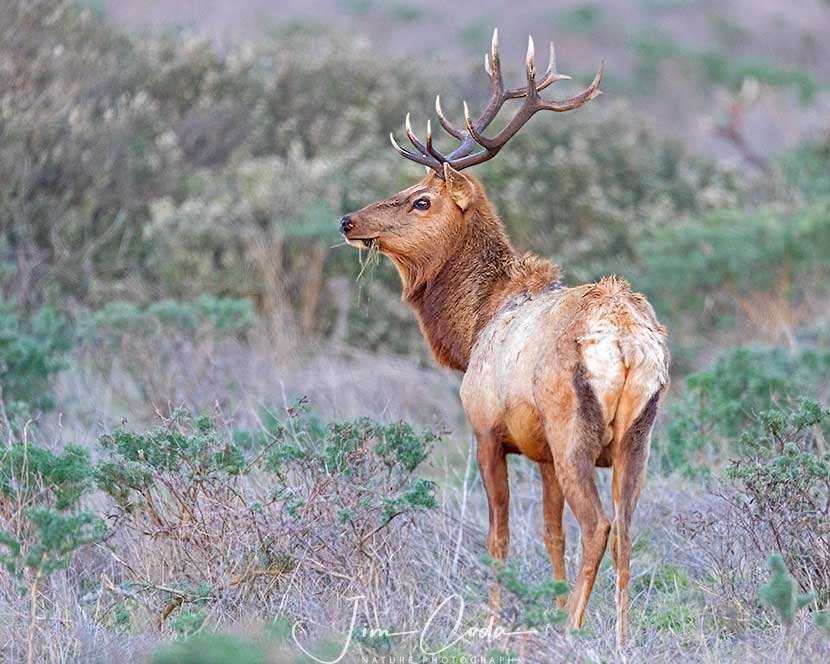Bull Tule Elk; Point Reyes National Seashore

A bull tule elk feeds at sunset.
This photo was taken during the last few minutes of daylight in 2019. It was a sunny day with no fog. This bull is one of the over 400 elk that are kept locked up inside a 2,600 acre enclosure. There are no perennial streams in the enclosure. The elk are dependent on old farm ponds that were dug decades ago before the Park Service bought the ranches. Unfortunately, these ponds dry up in drought years. About 250 elk died during the drought several years ago. Perennial streams exist not far outside the enclosure.
You may be wondering why they are kept penned up. It’s so the elk won’t bother the ranchers who live with their 6,000 cattle and sheep on about 25,000 acres of park land and do so at about half the rental rates for ranch lands outside the park.
When the Seashore was asked why the Park Service didn’t do anything to save the elk during the drought, the Park Service said that it was Park Service policy to let nature take its course. But in nature there are no eight-foot tall woven-wire elk-proof fences.





